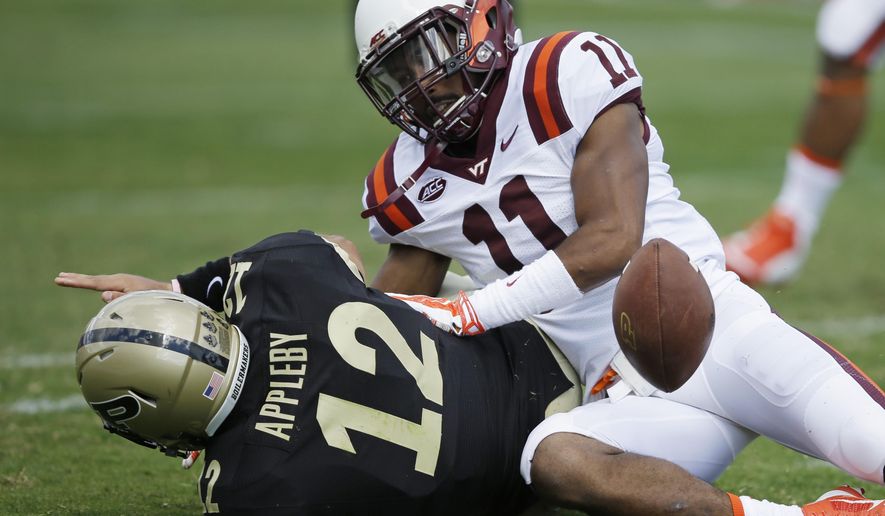The first-round-talent-who-falls-due-to-injury often occupies an imperfect place in the minds of fans and analysts. It’s tantalizing to project where that first-round potential could take a player eventually but, sometimes, those projections make it easy to forget that, first, the player has to be healthy.
Kendall Fuller experienced a bit of this in 2016 when, per Jay Gruden’s estimate, the defensive back was playing at about “85-90” percent. Fuller is healthy now, so the Redskins are hoping they’ll see more of that potential realized this upcoming season.
“I think he feels a lot better with where he is physically and that’s important obviously for a DB,” Gruden said. “We probably pushed him a little bit too hard. He felt good, but I don’t think he was really quite his 100 percent self.
“He was good enough to play, he’s a tough guy, he’ll fight through anything, but I think this year he feels like the strength is back.”
Fuller tore his right meniscus as a junior at Virginia Tech, his last year in college, and wound up needing microfracture surgery as well. Dr. James Andrews, who operated on Fuller, realized microfracture surgery was necessary when he went in to operate on Fuller’s meniscus.
Fuller had only been able to play three games his last year with the Hokies and dropped to the third round of the 2016 draft in large part because of the injury. Initially, the Redskins felt they’d lucked out and were happy to ease Fuller slowly into the defense.
Due to injuries and his own promise, Fuller wound up playing in 13 games and starting six of them last season. Fuller ended up playing 43 percent of the Redskins defensive snaps overall but, between weeks four and 12, he was used heavily.
In 13 games and six starts, Fuller defended two passes and made 40 tackles. Overall, he struggled in coverage, and the Redskins did not get what they wanted out of him.
The Redskins were asking for a lot. Fuller took on A.J. Green, Stefon Diggs, Jordy Nelson and Dez Bryant, some of whom were hiding in the slot from Josh Norman.
Slot corner is also a difficult position to pick up quickly. As a general rule, the closer a player lines up to the middle of the formation, the greater the mental demand to internalize scheme and opponents’ tendencies. More often, a slot corner works without the benefit of the sideline nearby and, when assignments can cut in both directions, joint health is especially critical.
Fuller said all the right things. As a player, he wasn’t used to struggling or going through a difficult transition to a higher level of play.
“You know, he came in as a freshman [in college] and he was big-time right away. You could see that he was a special player,” said defensive backs coach Torrian Gray, who held the same position at Virginia Tech from 2006-15 and overlapped with Fuller.
“Unfortunately, he had the injury at Virginia Tech and, just to see him evolve on this level, the Kendall Fuller from last year that I see on film is going to be, considering that he’s healthy, is going to be a lot different Kendall Fuller this year. So it’s fun to see him get back to being healthy and be the guy I know he can be.”
Gruden said that Fuller is faster and quicker. In offseason practices, Fuller showed some stickiness covering Jamison Crowder, a very good sign. He collected a few pass breakups and assisted a few other big plays.
Fuller has a lot to prove, as does the Redskins defense as a whole. He was put in a difficult situation last season, though. Now, his circumstances have improved somewhat, with Fuller’s health being the most important factor.
• Nora Princiotti can be reached at nprinciotti@washingtontimes.com.




Please read our comment policy before commenting.